|
May 20, 2020
Dear Neighbors and Friends:
I hope that you and your loved ones are doing well, staying healthy, and looking out for your neighbors and friends.
Well, we received the state’s revenue forecast this morning, and, as expected, it was awful. We in the Legislature are going to have our work cut out for us trying to keep the most needed public services intact as we work our way through the pandemic and its after-effects. You can read the details about this challenge below.
And if you want more, I think we still have some slots open for tomorrow evening’s town hall. Barbara, Alissa, and I will definitely be talking more about the forecast and its effects, and all of the other issues constituents would like to address. More about it below.
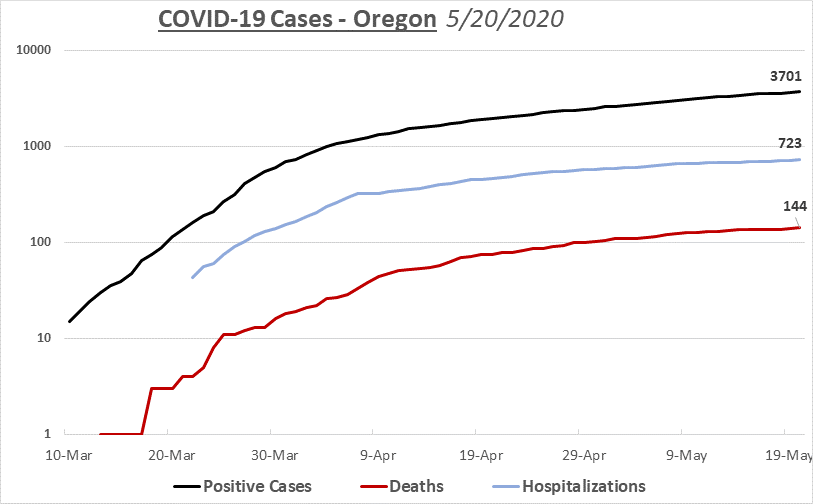
TODAY’S CORONAVIRUS AND CORONAVIRUS RESPONSE UPDATE
-
Positive Cases: OHA has reported that 65 additional Oregonians tested positive for COVID-19 yesterday, putting the total at 3,701.
-
Total Tests: The total number of tests in Oregon now stands at 102,049. That’s an increase of 2,419 tests.
-
Ratio: The percentage of positive results for today is 2.7%. Today’s national percentage is 5.2%. See below for a graph showing Oregon’s daily percentage changes over the last 14 days.
-
Deaths: I’m afraid that I must report 4 additional deaths due to the coronavirus. The total number of deaths in Oregon is now at 144.
-
Hospitalized: The number of Oregonians who have been hospitalized with symptoms, and who have also tested positive for the disease, increased by 9, and is now at 723.
-
Presumptive Cases: OHA is now including “presumptive COVID-19 cases” in its daily reports, consistent with recently amended guidance from the Centers for Disease Control and Prevention. A presumptive case is someone who does not yet have a positive PCR test result but is showing symptoms and has had close contact with a confirmed case. If they later test positive by PCR, those will be recategorized as confirmed cases. Today the number of new presumptive cases is 8, with the total at 100.
-
Other Hospital Information:
- Patients Currently w COVID-19 Symptoms (who may or may not have received a positive test result yet): 152 (15 more than yesterday). Of those, 53 have already received a positive test back.
- Available ICU Beds: 196 (54 fewer than yesterday).
- Other Available Beds: 1,672 (267 fewer than yesterday).
- ICU Patients w COVID-19 Symptoms (who may or may not have received a positive test result yet): 42 (1 fewer than yesterday).
- COVID-19 Patients Currently on Ventilators: 17 (4 more than yesterday).
- Available Ventilators: 780 (14 fewer than yesterday).
-
Today’s National Numbers:
-
PPE:
- In the last 24 hours the Emergency Coordination Center has not received any additional Personal Protective Equipment. We did learn today that as a result of the new prohibition on using the Asian version of the N95 respirator masks (called KN95), supplies of regular N95s have really tightened up. You can track the history of incoming and outgoing PPE shipments here.
-
Other Brief Updates:
- DHS reports an 80% increase in seniors having meals delivered to their homes compared to a year ago. This isn’t surprising, and it’s good to see. The need is obviously there.
- Another piece of good news: Oregon health insurers are asking for the lowest average rate increase since the Affordable Care Act in 2014. Again, this makes sense, given that insurers have been paying out much less for doctor visits and other procedures for last last few months.
- And while we’re on a good news roll, the Governor’s Office has started a monthly new summary that includes some good silver-lining stories.
- Although it’s not yet reflected on the Governor's County Status website, the Oregonian just reported that the Governor has granted approval for Marion County and Polk County to begin Phase One. I look forward to learning more. Marion County’s infection rate still seems very high, and at 11% its percentage of positive test results is far higher than the state average. I’ll let you know more details tomorrow.
Tomorrow: Another Zoom Town Hall
I hope you'll join me for another edition of our joint zoom town halls with Rep. Alissa Keny-Guyer and Rep. Barbara Smith Warner. We'll be able to give you the latest on the revenue impact of the pandemic and answer your questions. Click here to pre-register and add questions and topics you'd like us to cover. The town hall will begin at 5pm tomorrow, Thursday 5/21.
This Week’s OHA Weekly Report
This week's OHA report has been released.
It again provides a weekly look at the numbers by county, by zip code, by racial/ethnic group, by risk factor, and by symptom. You’ll find information on recovery rates and time for recovery. For those who have been symptomatic, the recovery times are 14-28 days, and for those who’ve been hospitalized with COVID, it’s taking 17-34 days to recover.
The demographic information reveals some interesting trends. You’ll see that women are more likely to test positive for COVID but less likely to be hospitalized or to die from the disease. As you’ve probably heard, those who identify as Hispanic are much more likely to be positive for the disease; however, they are much less likely to die from it. Black Oregonians are both more likely to test positive and to die from the disease than White Oregonians.
The report again provides a full list of those senior residences with three or more cases and/or one death. You’ll notice that facilities that were previously on the list are no longer there. That’s because facilities with outbreaks that are considered closed have been removed from this list. An outbreak is considered closed if there are no new cases identified for 28 days after the last case onset. Last week there were 26 facilities on the list, this week only 22, and only one of them is new. That’s good news.
If you look at the results by zip code, you’ll see more zip codes with higher (20 or more) positive cases per 10,000 residents than were shown the previous week. The zip codes in rural Marion County, around Woodburn, remain areas with very high rates of infection. Again, here’s a zip code map to help you locate zip codes.
Revenue Forecast Released – Big Hits to State Budget
This morning the House and Senate Revenue Committees received the regular quarterly revenue forecast from Mark McMullen and Josh Lehner of the Office of Economic Analysis (OEA). It was regular in that it came during the third week of May. It was irregular, however, in several ways that reflect these times: It was held remotely via videoconference, Mark and Josh were sporting beards, and the forecast showed revenues plummeting in a way we haven’t seen for a decade.
Here is Josh’s blog post for today that summarizes the economic background for the forecast. You’ll see that they are using a “square root” kind of figure to allow us to visualize the likely economic trajectory our revenues face: a huge (record) drop, followed by a strong upward bounce as people are able to get out, start spending, and business resumes (but still well below the norm), followed by a slow, gradual improvement. Until we have a vaccine and/or effective treatment medicine, we have to expect a lot of caution around economic improvement. In addition, we have to expect that some (or many) businesses that have shut down in the near term will not be reopening for various reasons, further dampening economic activity in the state.
The economists do believe that the recovery will be quicker than it was under the Great Recession ten years ago, but it will be a significant hit. For now, they are predicting that we won’t be back to normal till the middle of this decade.
Here is the complete economic forecast document, and here is the complete revenue forecast document. Here are the PowerPoint slides of today’s OEA presentation.
You’ll see that they are projecting a reduction in the current 2019-21 biennium of $1.9 billion in General Fund revenues. In addition, they are projecting reductions of $414 in the new Corporate Activities Tax revenues (which is intended to fund the new Student Success Act programs starting next year), and $364 million in Lottery dollars (which helps fund State Parks, other natural resources programs, and schools, including Outdoor School).
Fortunately, we were in a great budgetary situation when the pandemic hit, the best in our history due to a good economy and prudent budgeting ever since the Great Recession. Our current ending fund balance was projected to be $1.2 billion in the last revenue forecast in March. That balance will evaporate, of course, but it will absorb part of the General Fund deficit, reducing it from $1.9 billion to around $700 million.
We also have done a good job of putting money into reserves over the last decade, expecting that another recession would arrive someday (though we never thought it would be triggered by a disease). We currently have $1.6 billion set aside in reserves, $700 million of which must go to schools.
The reserves will definitely help, but unfortunately they are not a panacea. We can’t use them just to get through the current biennium. The next biennium (2021-23) is projected to be much worse, and the biennium after that won’t be much better. The economists are currently projecting a more than $4 billion revenue reduction for 2021-23. We obviously cannot spend down all of our reserves to get through the current biennium, knowing that we’ll need help to get through the next one.
One unknown that’s out there is how much, if anything, we can expect from the federal government to help us with this shortfall. Without it, there is no way that we can protect those who need the social safety net, who need affordable higher ed, who need healthy schools and other state services. With the kind of support envisioned in the House proposal (the “Heroes Act”), or something close to it, we may be able to avoid the worst of those cuts.
The burden is now on the Legislature to make some very difficult decisions regarding selective budget cuts, careful dipping into the reserves, and other ways to protect high-priority budgets. Needless to say, work on this has already begun, as we’ll need to come up with a plan in the next few weeks.
Here are some additional items of interest that were brought up in the forecast hearing:
- In a normal year 10% of Oregon businesses go out of business. We’re obviously looking at a higher percentage in the next year or two.
- Oregon has been the beneficiary of in-migration, people moving to the state to follow good jobs, which has led to a steady increase in our revenues. With the pandemic, we can expect little of that in the short run, and not much more in the mid term given the expected continued downturn. But the economists and their advisors remain optimistic about Oregon’s attractiveness in the long term.
- There was a sharp increase in video poker revenues over the weekend in those counties that entered Phase One reopening.
- We can expect a sharp increase in purchasing, but there are limits. A person who has been putting off a haircut won’t get two haircuts right away. e.g., we can’t expect that every deferred purchase will ultimately be purchased.
- One billion dollars in kicker payments have already gone out to people who have paid their state income taxes. Around $700 million remains to go out. That’s unfortunate given the state budget shortfall, but it does come at a good time for many households who need the income.
- As always, the state remains dependent on revenues from capital gains and the stock market. It’s too soon to know for sure how the stock market will respond to this economic situation.
- We heard that the state should definitely consider investing in infrastructure bonding right now. Our credit rating is excellent and interest rates are next to nothing right now. Investing in infrastructure projects will of course generate needed economic activity.
- UI benefits, once they are paid out, will bring billions of dollars of (taxable) income into the state, as will the PPP small business loans. This will definitely help us get through the current biennium.
- The economists pointed out that the CARES Act does include some tax cuts for large corporations, which could contribute to our revenue shortfall. The Legislature will need to consider decoupling from these parts of the federal tax code.
Coming Up: Legislative Committee Hearings
Normally, we would received today’s revenue forecast at the Capitol in the middle of our quarterly Legislative Days, when committees and task forces meet throughout the day for three or four days. That’s not possible given the current restrictions. So, like the Revenue Committees did, all the others will be meeting remotely over the next few weeks. We need to space them out for technical reasons. The House committees will be meeting for the rest of this week and next week. Then, the Senate committees will convene during the first week of June.
Most of the hearings will be COVID-focused, but most will also include briefings, updates, and reports on a number of other issues, and in many cases will include topics likely to be the subject of legislation next session.
The House agendas are already posted, and I’m listing them below in order of appearance. You can click on them to see their agendas, and you can use the same links if you want to watch the hearings or get to the meeting materials.
The Senate agendas will be posted at the end of this week or early next week, and I’ll list them then as well.
May 21
House Economic Development Committee, 11:30 a.m.
May 22
House Health Care Committee, 8:00 am
House Housing Committee, 3:00 pm
May 26
House Rules Committee, 9:00 am
House Behavioral Health Committee, 11:30 am
House Agriculture and Natural Resources Committee, 3:00 pm
May 27
House Veterans and Emergency Preparedness Committee, 8:00 am
House Business and Labor Committee, 11:30 am
House Human Services Committee, 3:00 pm
May 28
House Natural Resources Committee, 8:00 am
House Energy and Environment Committee, 11:30 am
House Judiciary Committee, 3:00 pm
May 29
House Education Committee, 11:30 am
House Water Committee, 3:00 pm
Want to Know Where CARES Act Dollars to Hospitals and other Health Care Providers Has Gone?
The federal CARES Act’s Provider Relief Fund provided $50 billion in direct funding to hospitals and other health care providers in order to cushion the blow of the downturn on their operations. The federal Health Resources and Services Administration has recently created a database that lists all the providers that have attested to receiving a payment from the Fund.
OHA has just summarized the federal dataset for Oregon hospitals and hospital systems as of May 14, 2020. The provider-specific information is summarized by county, by hospital and by category of provider. It’s not exhaustive, as it relies on facilities attesting to having received funds, but it’s broadly comprehensive. Check them out:
Additional Graphs:

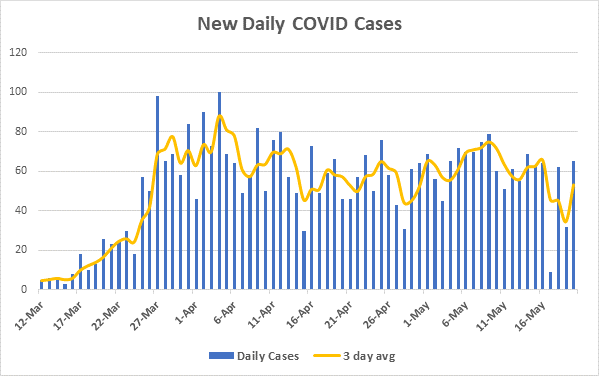
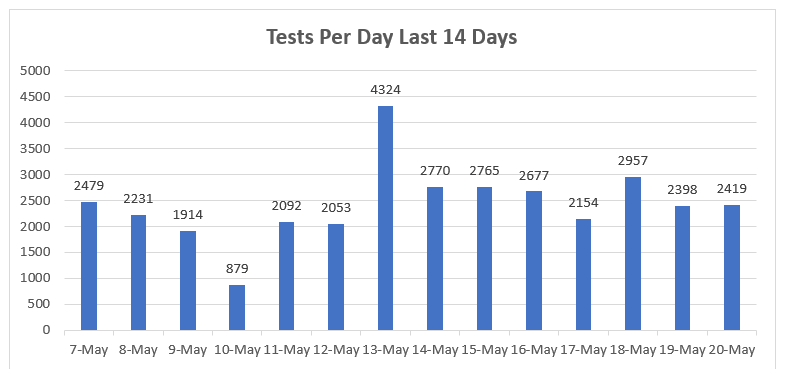

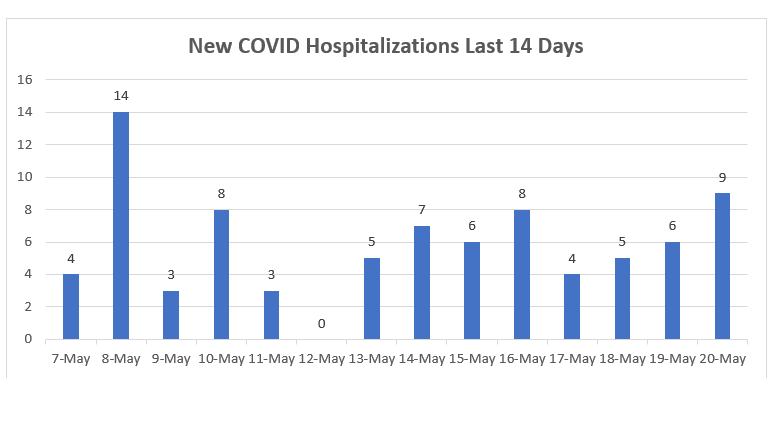 Want to See Past Newsletters?
If there was COVID-related information in a past newsletter that you want to go back to, but find you’ve deleted it, you can always go to my legislative website (www.senatordembrow.com), click on “News and Information,” and you’ll find them all there. Also, if someone forwarded you this newsletter and you’d like to get it directly, you can sign up for it there.
AND FINALLY,
Here again are some resources that you will find useful:
If the above links are not providing you with answers to your questions or directing you to the help that you need, please consider me and my office to be a resource. We’ll do our best to assist you or steer you in the right direction.
Best,
 Senator Michael Dembrow
District 23
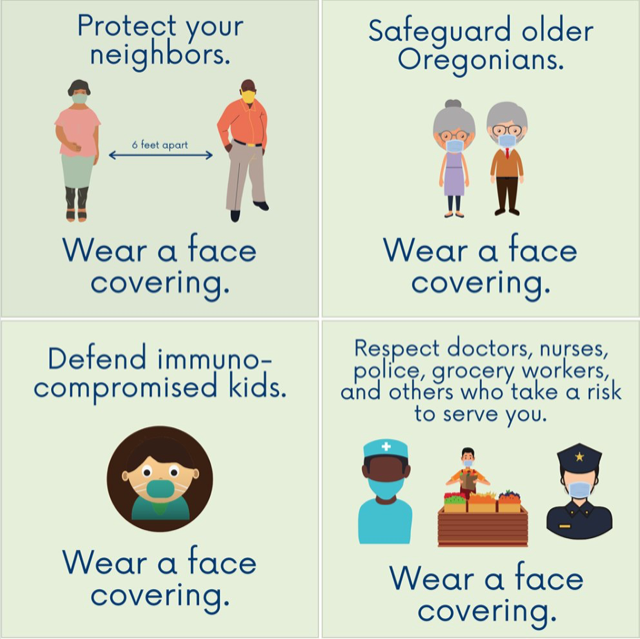
email: Sen.MichaelDembrow@oregonlegislature.gov
web: www.senatordembrow.com
phone: 503-986-1723
mail: 900 Court St NE, S-407, Salem, OR, 97301
|